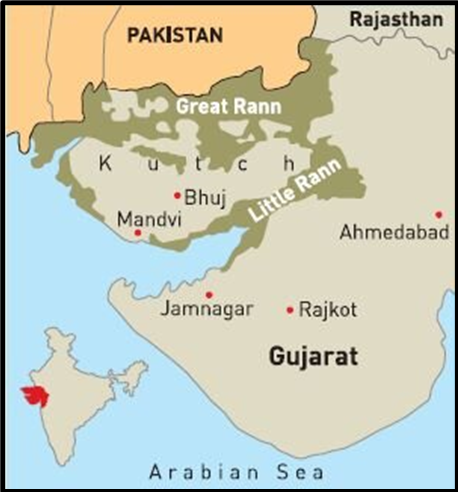5,200-YEAR-OLD HARAPPAN SETTLEMENT UNEARTHED IN KACHCHH, GUJARAT, REVEALING ANCIENT CIVILIZATION.
Why in the news?
The discovery of a skeleton, pottery artefacts, and animal bones at Padta Bet, a hillock near Juna Khatiya, suggests a 5,200-year-old Harappan settlement.
Source:wikimedia
About the Archaeological Excavation and Findings :
- Kerala University researchers discovered a 5,200-year-old Harappan settlement at Padta Bet, near Khatiya village in Kachchh, Gujarat.
- This site, located 1.5 km from the Juna Khatiya necropolis discovered in 2019, revealed significant evidence about the Early Harappan period.
- Excavations led by assistant professors Abhayan G.S. and Rajesh S.V. unveiled pottery, artefacts, and animal bone fragments.
- The settlement, situated on the slopes of Pasta Bet hillock, exhibited circular and rectangular structures made of sandstone and shales.
- Various ceramics, including locally distinctive types, suggested the presence of Harappan people from circa 3200 BCE to 1700 BCE.
| Key Facts about Harappan Civilization:
● Origin: Indus Valley Civilization, also known as Harappan Civilization, dates back to 2500–1700 BCE. ● Extent: Covered areas along the Indus River in present-day Afghanistan, Pakistan, and northwest India. ● Significance: One of the earliest urban cultures, alongside Mesopotamia and Egypt. ● Duration: Existed from 3300-1300 BCE, with its mature period from 2600-1900 BCE. ● Cities: Major cities include Harappa and Mohenjo-Daro, providing key archaeological insights into ancient cultures. ● Widespread: Considered the most extensive of the early civilizations. |





